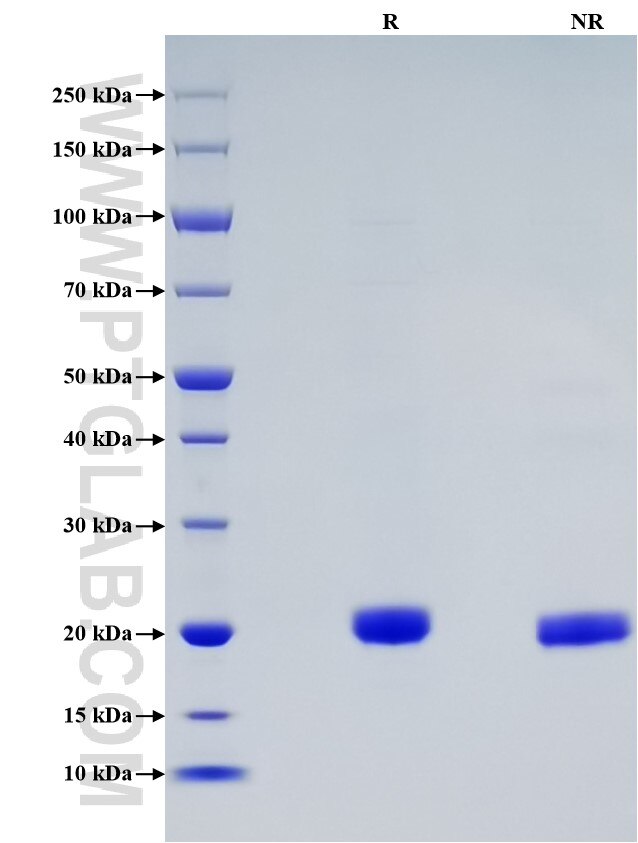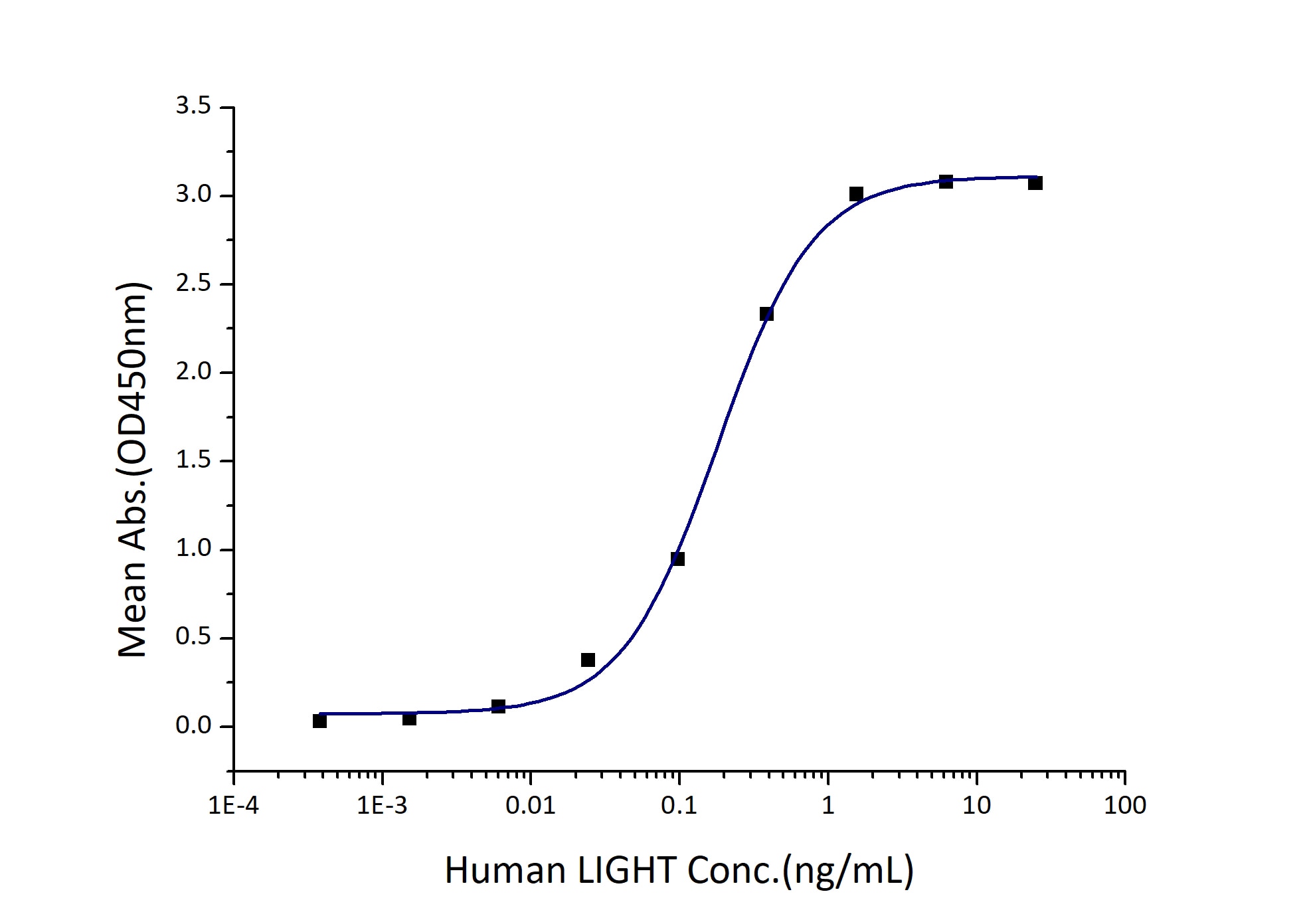Recombinant Human LIGHT/CD258 protein (His Tag)
Species
Human
Purity
>95 %, SDS-PAGE
Tag
His Tag
Activity
EC50: 0.1-0.4 ng/mL
Cat no : Eg32095
Validation Data Gallery
Product Information
| Purity | >95 %, SDS-PAGE |
| Endotoxin | <0.1 EU/μg protein, LAL method |
| Activity |
Immobilized Human HVEM (Myc tag, His tag) at 2 μg/mL (100 μL/well) can bind Human LIGHT (His tag) with a linear range of 0.1-0.4 ng/mL. |
| Expression | HEK293-derived Human LIGHT protein Asp74-Val240 (Accession# O43557) with a His tag at the N-terminus. |
| GeneID | 8740 |
| Accession | O43557 |
| PredictedSize | 19 kDa |
| SDS-PAGE | 20-22 kDa, reducing (R) conditions |
| Formulation | Lyophilized from 0.22 μm filtered solution in PBS, pH 7.4. Normally 5% trehalose and 5% mannitol are added as protectants before lyophilization. |
| Reconstitution | Briefly centrifuge the tube before opening. Reconstitute at 0.1-0.5 mg/mL in sterile water. |
| Storage Conditions |
It is recommended that the protein be aliquoted for optimal storage. Avoid repeated freeze-thaw cycles.
|
| Shipping | The product is shipped at ambient temperature. Upon receipt, store it immediately at the recommended temperature. |
Background
Tumor necrosis factor superfamily member 14 (TNFSF14), LIGHT, is a component of the cytokine network that regulates innate and adaptive immune responses, which promote homeostasis of lymphoid organs, liver, and bone. TNFSF14 is an immunomodulatory cytokine and a member of the TNF superfamily. It is expressed by lymphocytes, monocytes, and granulocytes, and is primarily known for its critical role in immune functions. TNFSF14 leads to T cell activation through interaction with HVEM by enhancing T cell proliferation and induces cytokine secretion through binding to lymphotoxin β receptor (LTβR) on mast cells. TNFSF14 has also been implicated in various pathogenic conditions related to inflammatory responses such as tumors, type 2 diabetes, and atherosclerosis.
References:
1.Giacomina Brunetti. et al. (2020). J Bone Miner Res. 35(4):671-680 2.Marcos W Steinberg. et al. (2011). Immunol Rev. 244(1):169-187. 3.K Tamada. et al. (2000). J Immunol. 164(8):4105-4110. 4.Peter Stopfer. et al. (2004). J Immunol. 172(12):7459-7465. 5.W H Lee. et al. (2001). Arterioscler Thromb Vasc Biol. 21(12):2004-2010.

